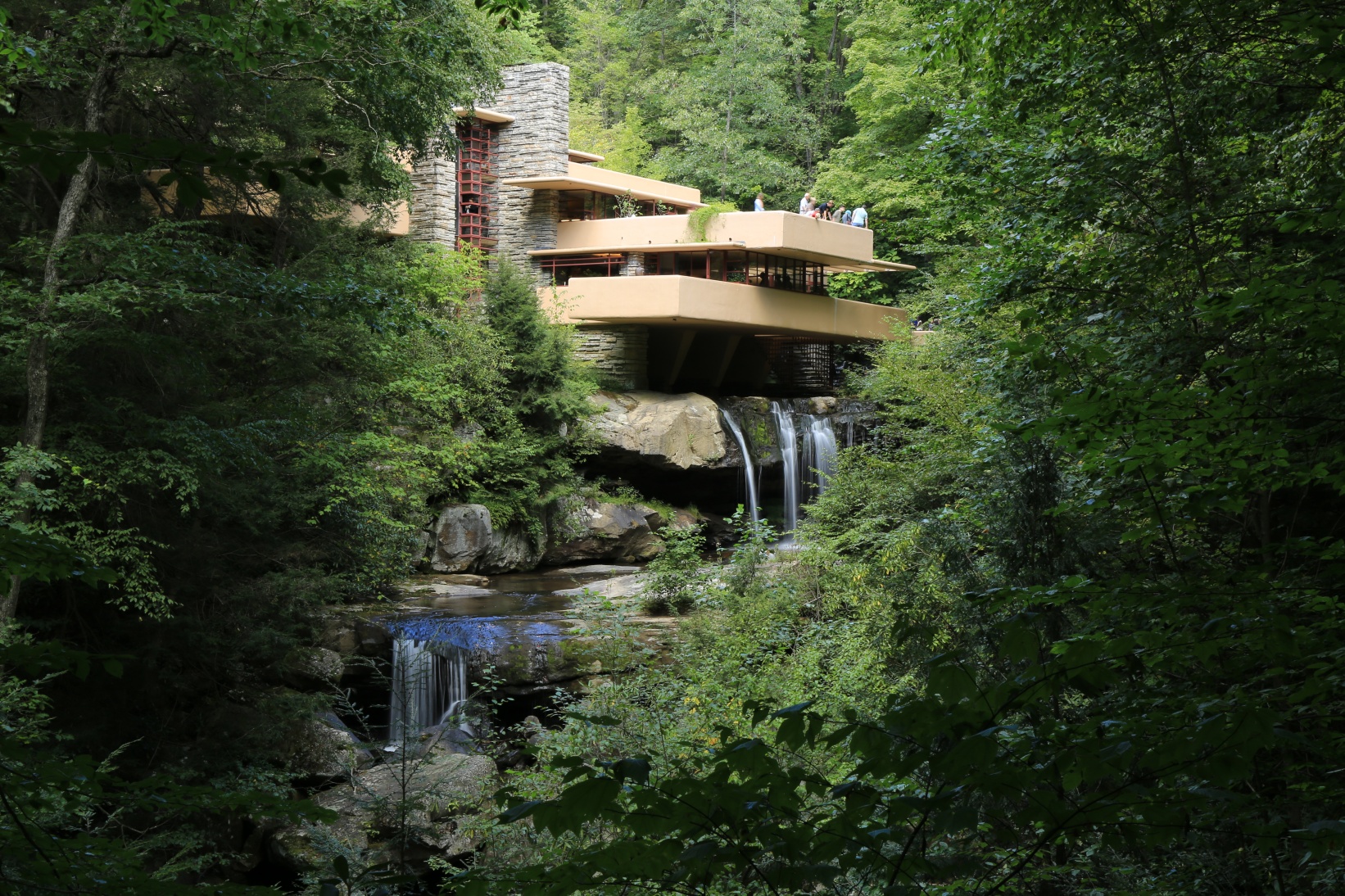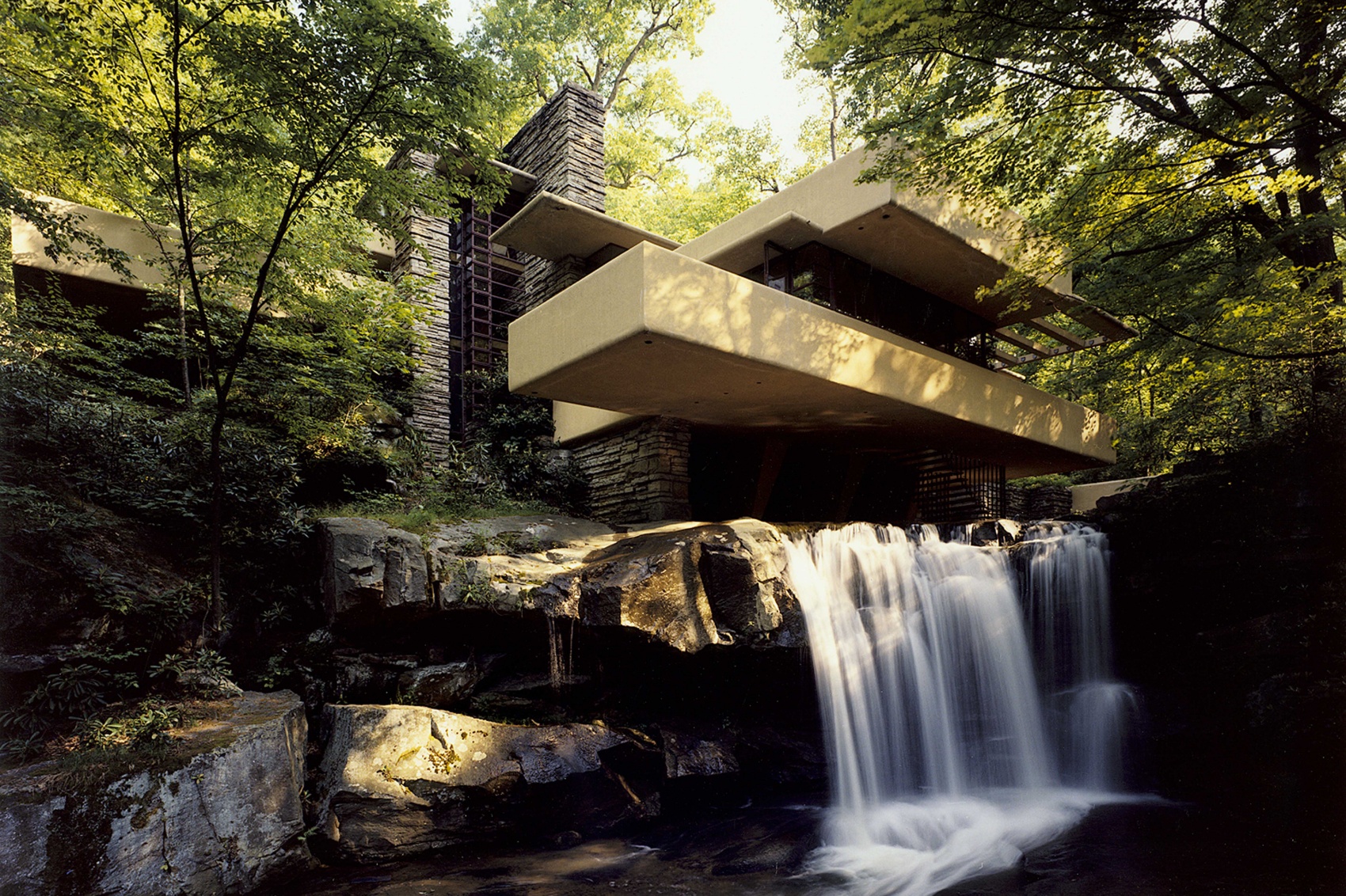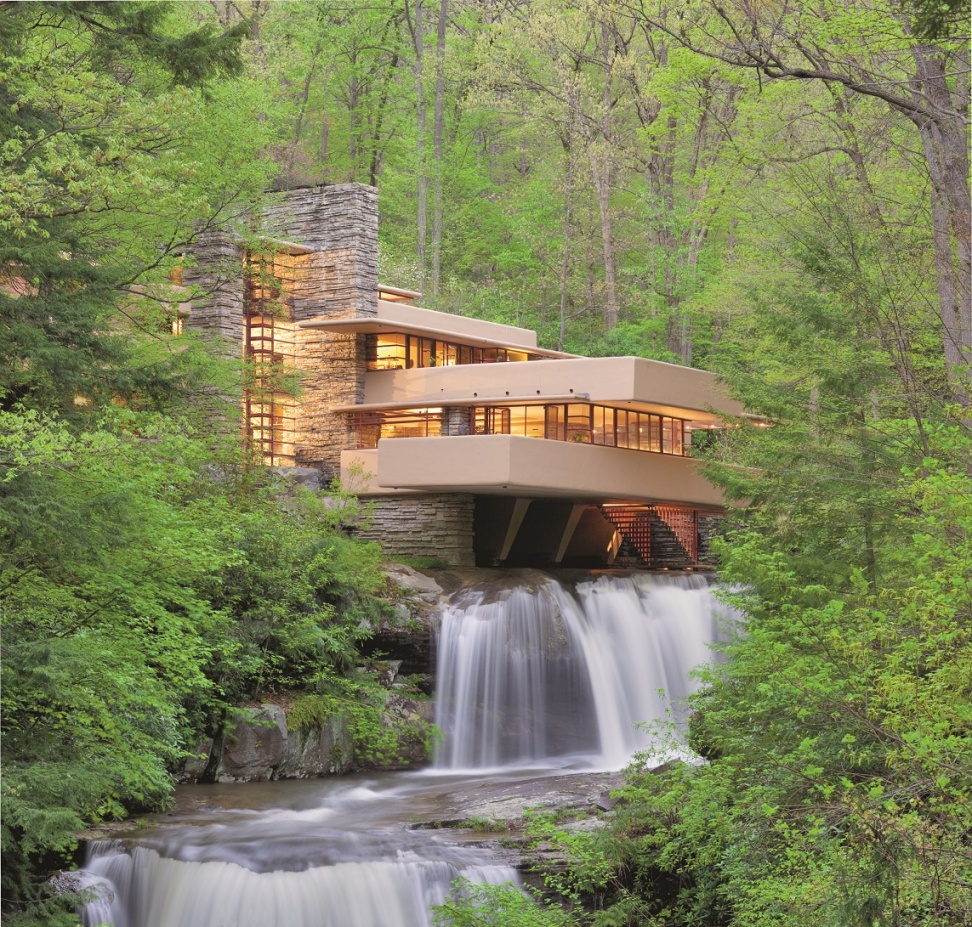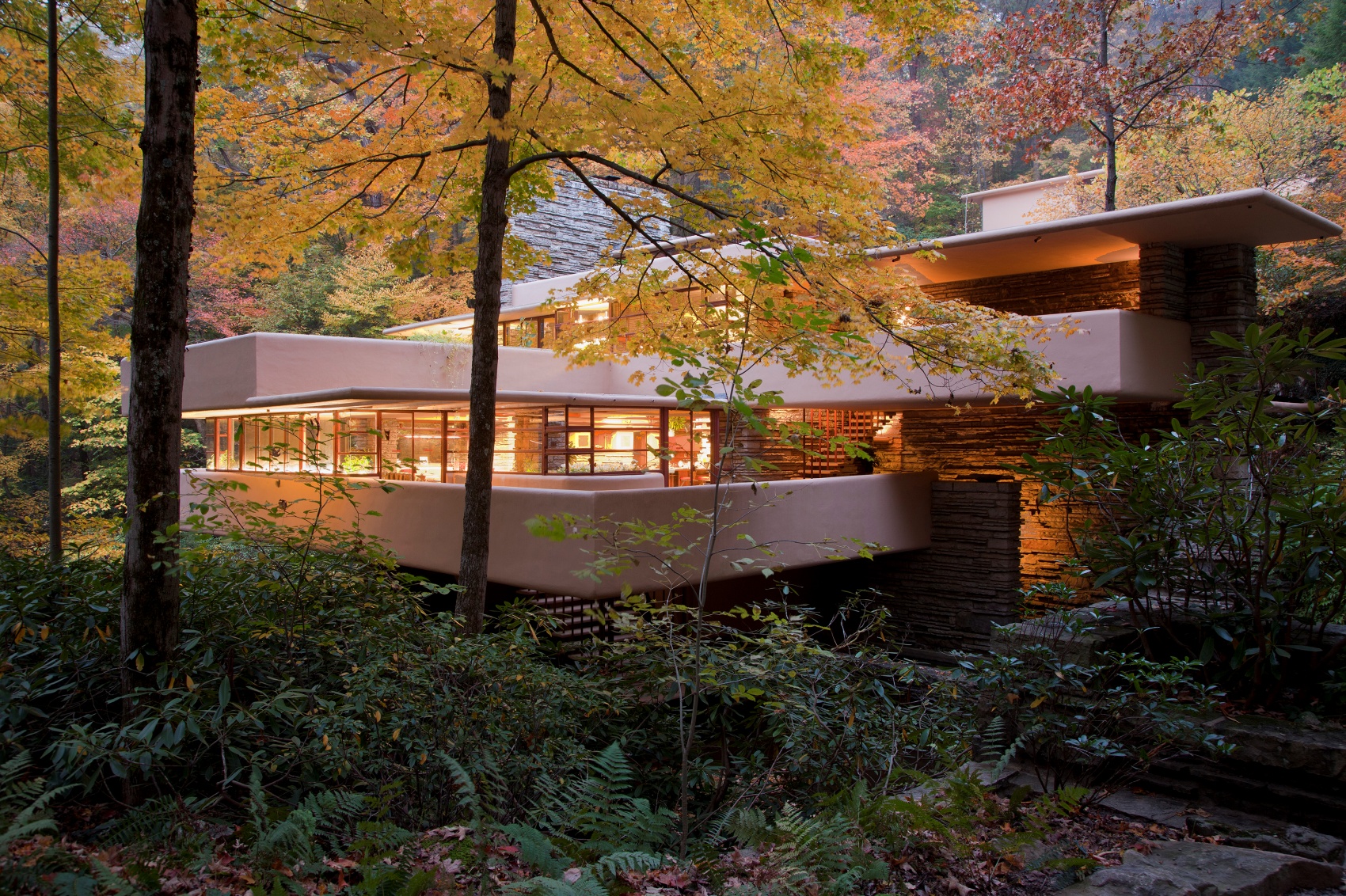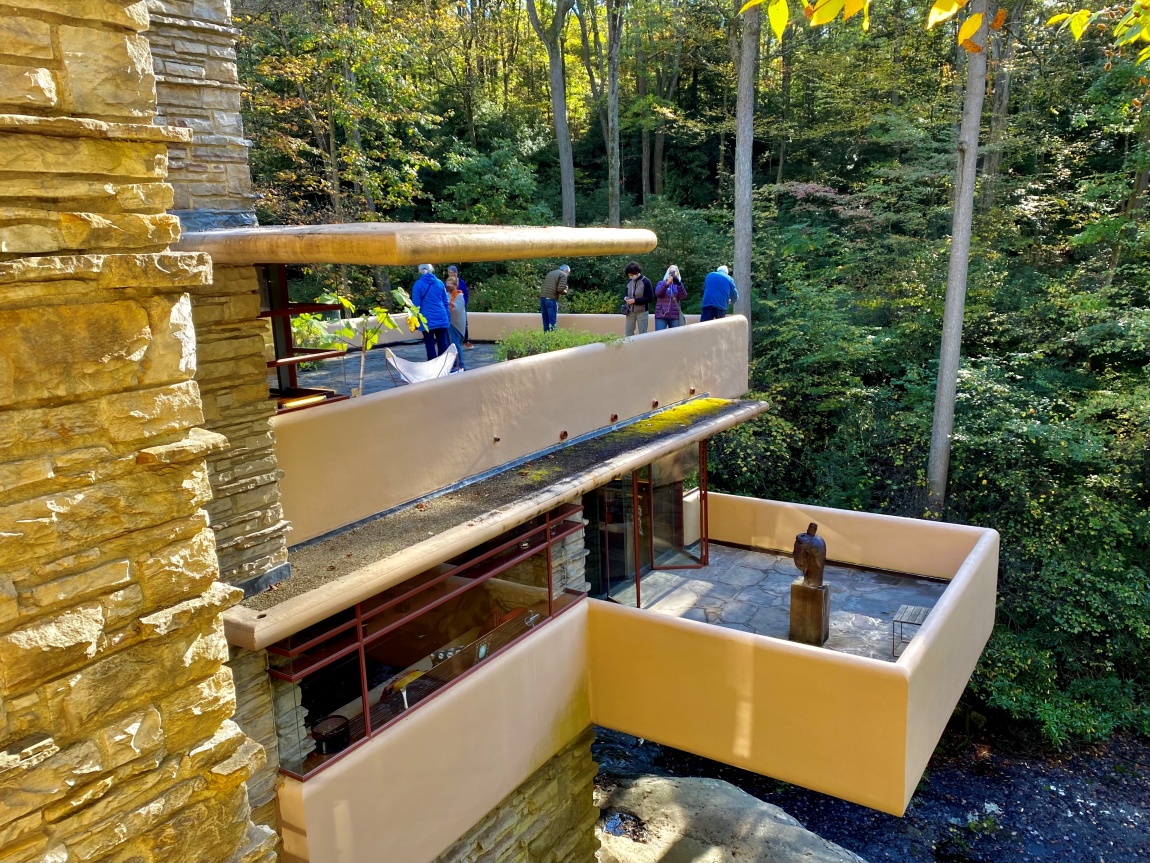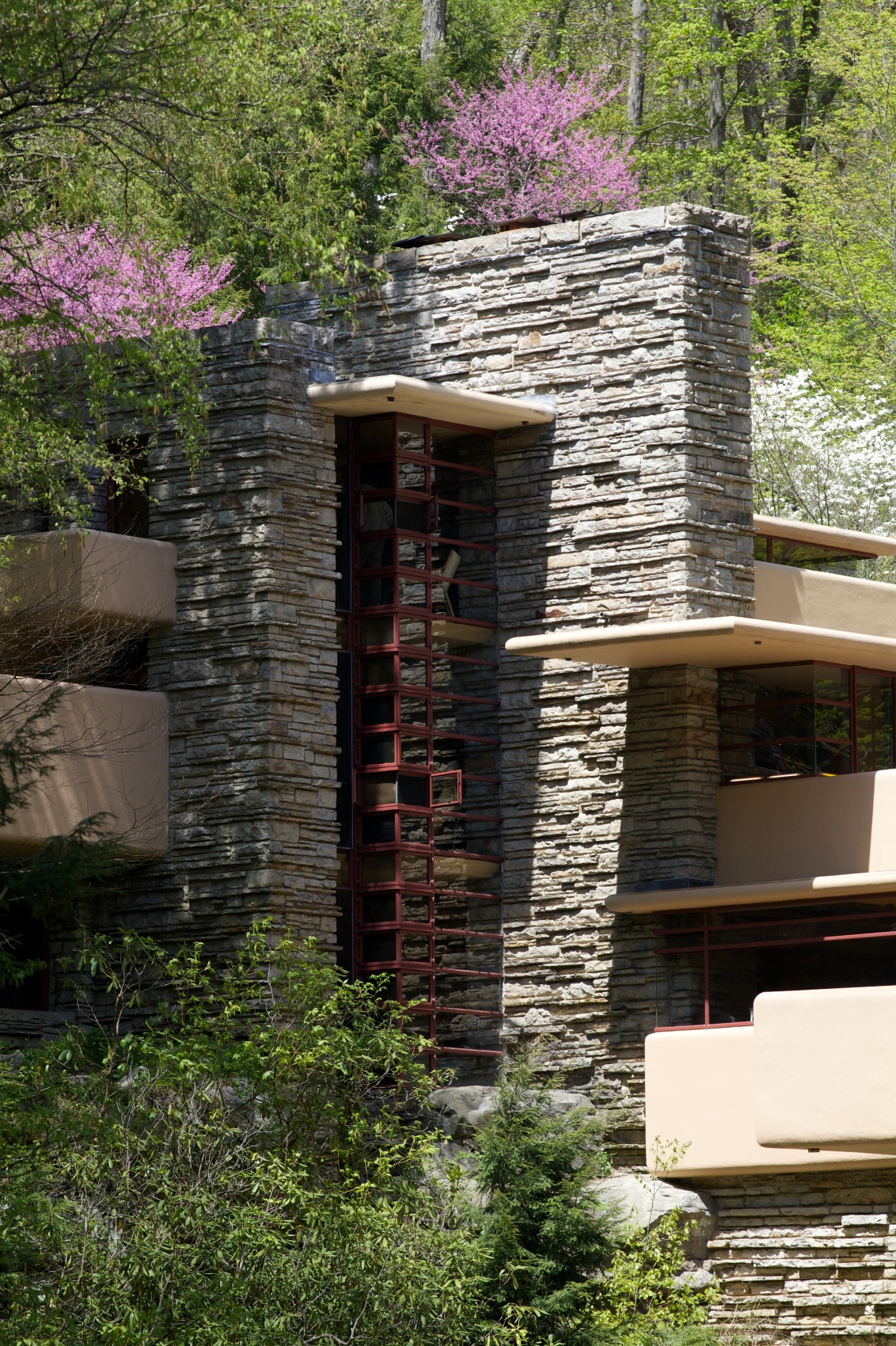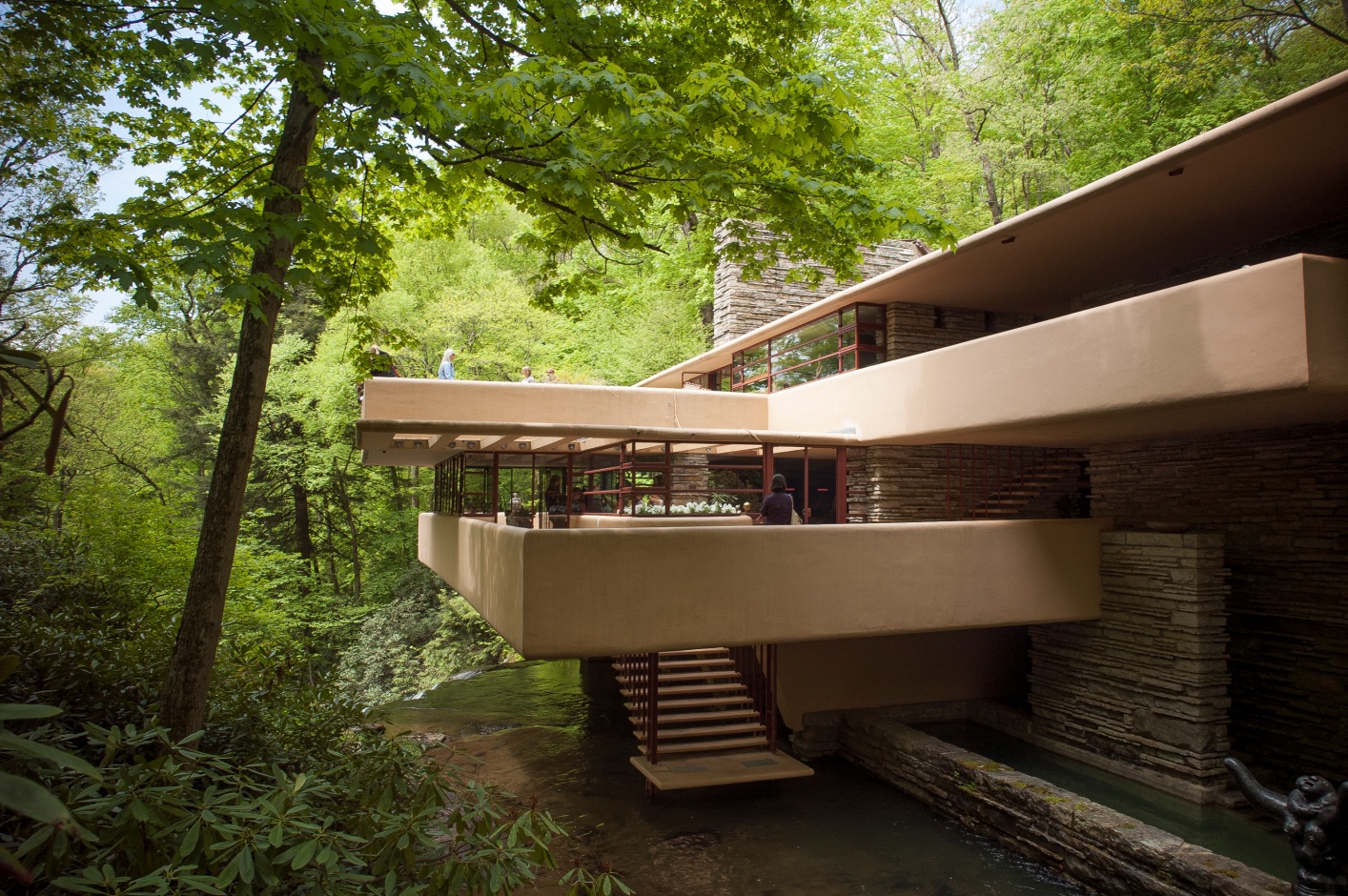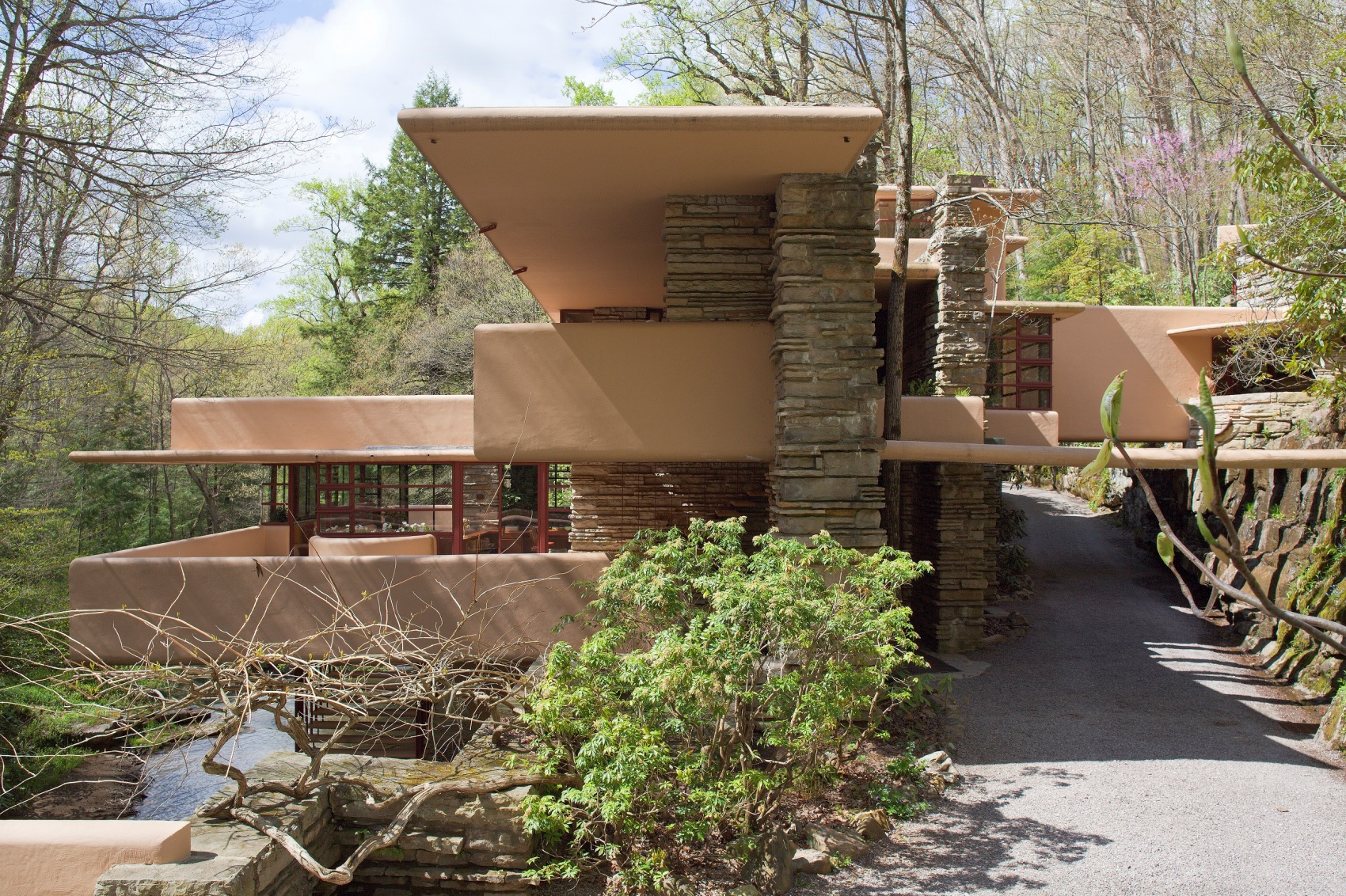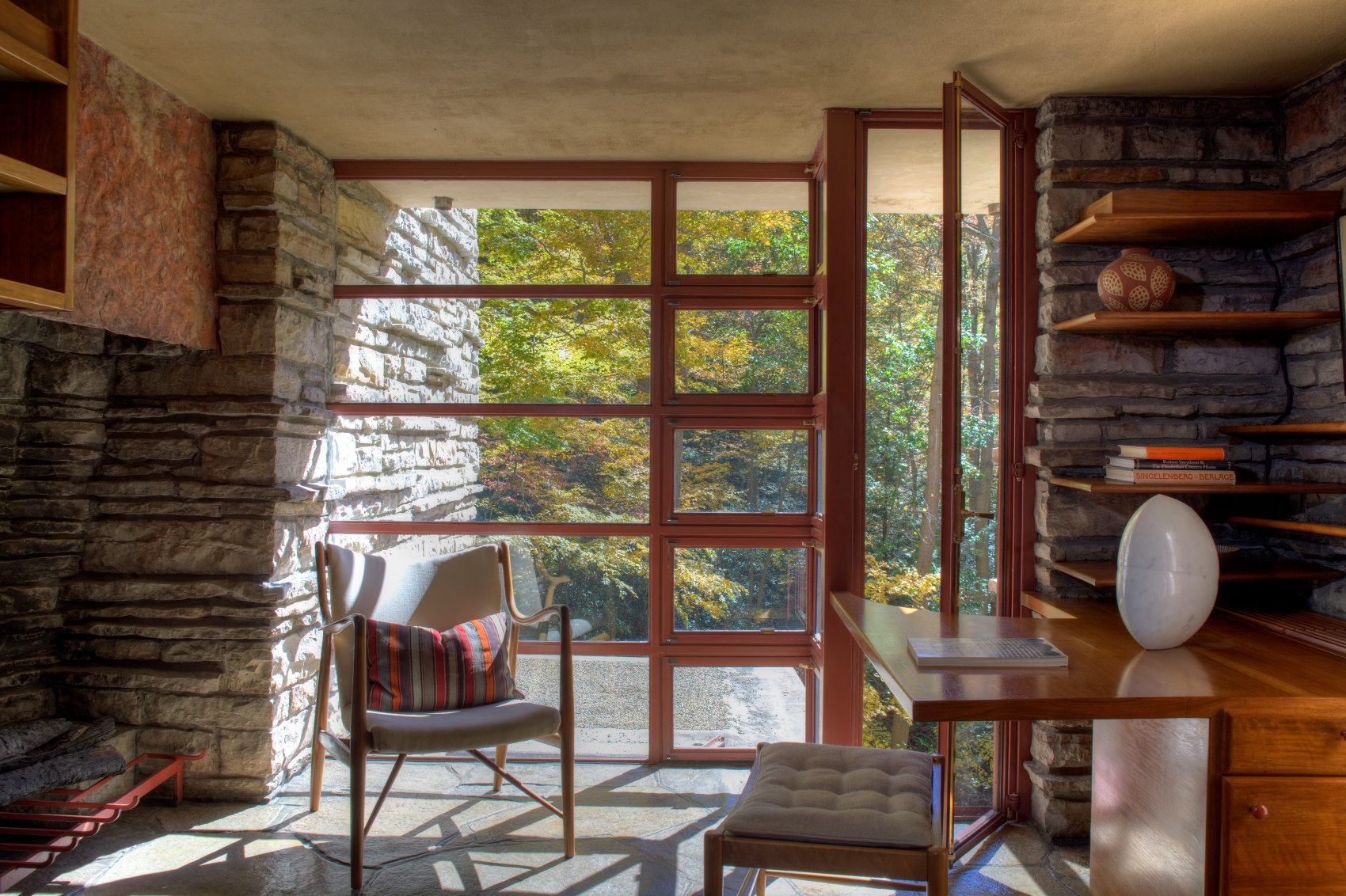Mr and Mrs Kaufmann’s summer house, more widely known as ‘Fallingwater’, is one of Frank Lloyd Wright’s finest designs. The work of the pioneer of American architecture can be classified as the most famous house of modernism, or more precisely of organic architecture. A philosophy that assumes the similarity of architecture to nature is the leitmotif of the house. After all, the building hangs over a waterfall in Pennsylvania.
Nestled in the green
In 1934, Wright was commissioned to design a summer house for the wealthy Kaufmann family. The owner of Pittsburgh’s largest shop had met the architect through his son. Edgar Kaufmann Jr. wanted to learn the trade from Wright and attended his courses. In turn, the architect’s acquaintance with Kaufmann Sr. resulted in the aesthetic design of a summer house.
Fascinated by nature, the businessman wanted the house to be nestled in the greenery. Initially, the building was to be located below Fallingwater, but Wright felt the house would look better at the top. Fallingwater would not be representative of organic architecture if its colours and form disturbed the image of its surroundings. For this reason, the architect opted for cream concrete and grey stone. An interesting detail is the intense red of the balustrades and windows.
Japanese river noise
The striking feature of the house is its form. The overlapping terraces of the perpendiculars overlook and hide in the block. The layout of the house encourages contact with nature, through large terraces and a staircase suspended just above the flowing river. Finally, the concrete outlines a horizontal layout that blends harmoniously with the verticality of the stone.
The proximity to nature is also linked to Wright’s Japanese inspirations. Numerous Japanese sculptures can be found on the exterior, and inside the architect has placed red details from the Land of the Cherry Blossom. The most interesting design element depicting the harmony of man and nature is…. a waterfall. Specifically, the continuous sound of falling water. Although you cannot always see the river from inside, you can certainly hear its sound.
Tight, low, deliberate
The heart of the building’s largest room is the fireplace, made from two boulders found on the construction site. There would be nothing unusual about this, were it not for the fact that the rocks were not moved to this location by man. The boulders have been in the same place for millions of years and run through the floor of the house. The whole room is architecturally consistent. Both the walls and the floor are also made of stone.
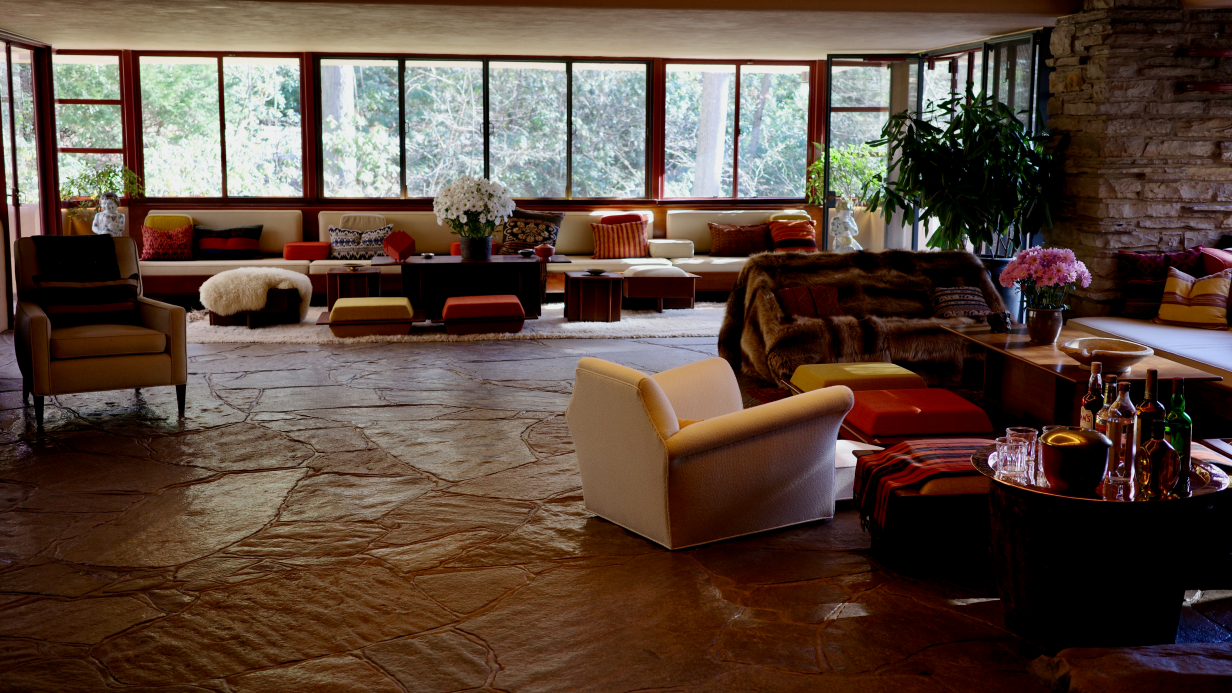
The rest of the rooms are small rooms with low ceilings, sometimes reaching below two metres. The staircase and corridors are also cramped. In keeping with the philosophy of organic architecture, this arrangement is intended to encourage residents to go outside. It is worth noting that the owner wanted guests to spend as much time as possible on the capacious terraces rather than inside.
Dedicated to the museum
Construction of the house was completed in 1938. A year later, servants’ quarters and an additional guest house were added. A small car park and a swimming pool fed by water from the stream were built next to it. The total cost of construction was $155,000, or $3.4 million when converted to today’s money. Interestingly, the Kaufmann family used the house until 1963, when the businessman’s son donated Fallingwater to the Western Pennsylvania Conservancy.
Edgar Kaufmann Jr. wanted others to be able to admire Wright’s work. For this reason, a Fallingwater visitor centre was built in the 1980s. Care was also taken to ensure that the structure was in good condition. From an engineering perspective, the house has many flaws. The long terraces strain the skeleton of the building, and Wright insisted on not reinforcing the concrete with steel. The house’s biggest enemy is moisture. After all, the house hangs over the river. The Western Pennsylvania Conservancy is constantly repairing and cleaning the building.
Fallingwater is one of the greatest works of one of the greatest architects. Frank Lloyd Wright was 67 years old when he designed the building and it was by no means the architect’s last significant project. He only died in 1959, at the age of 91, and his legacy is continually recognised. Among Wright’s more than 1,000 projects, Fallingwater qualifies as one of his top ten most outstanding works. This is especially true if we consider the building’s influence on the architecture of the houses of Modernism.
Source: Fallingwater
Also read: Architecture | Fallingwater house | Modernism | Historicism | United States | Concrete | whiteMAD on Instagram

